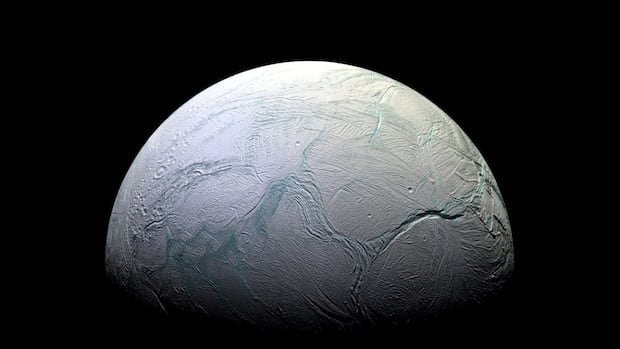Scientists have identified novel organic compounds in icy plumes emanating from Saturn’s moon Enceladus, strengthening the possibility of this oceanic world harboring conditions conducive to life. The findings, disclosed on Wednesday, stem from data collected by NASA’s Cassini spacecraft during a close flyby of Enceladus in 2008. With its concealed ocean and erupting water plumes near the south pole, Enceladus has long been considered a promising candidate in the quest for extraterrestrial life.
While Enceladus is deemed potentially habitable, there is no definitive evidence of life existing there. Fabian Klenner from the University of Washington emphasized the distinction between habitability and actual inhabited status. A team of international researchers undertook a detailed examination of small ice grains sampled by Cassini from the moon’s geysers. These grains, younger than the older particles found in one of Saturn’s outer rings, were analyzed at high speeds, providing clearer insights into the chemical composition.
Previous studies had detected organic molecules in the older geysers’ grains, prompting concerns about potential alterations due to space radiation over time. The new analysis revealed the presence of familiar molecules from the moon’s subterranean sea in the fresh grains, along with additional chemical compounds. These significant findings were recently published in Nature Astronomy.
Enceladus, a minuscule ice-covered moon with a rocky core, approximately 500 kilometers wide, is believed to have hydrothermal vents akin to those in the Arctic on its ocean floor. The moon’s water vapor jets and frozen particles can extend thousands of kilometers into space. Nozair Khawaja, the lead author from the Free University of Berlin, expressed confidence in the origin of these molecules from Enceladus’s underground ocean, which enhances its potential for habitability.
The researchers advocate for new missions to further explore Enceladus, as the Cassini mission concluded in 2017. The European Space Agency and China have proposed future landing missions on Enceladus. Additionally, NASA is en route to Jupiter’s moon Europa with the Europa Clipper spacecraft, expected to commence Jupiter orbiting in 2030 for numerous flybys. The European Space Agency’s Juice mission is also en route to explore Jupiter and its icy moons, including Europa.
Nigel Mason, a physics professor from the University of Kent not involved in the study, highlighted that underground oceans on moons are prime candidates for potential extraterrestrial life emergence in our solar system. The latest findings underscore the necessity for continued investigations in this field.
